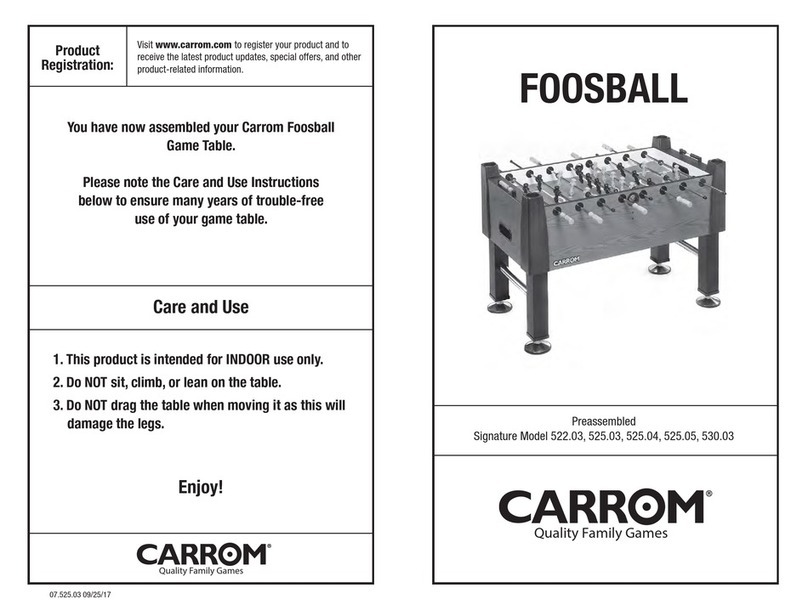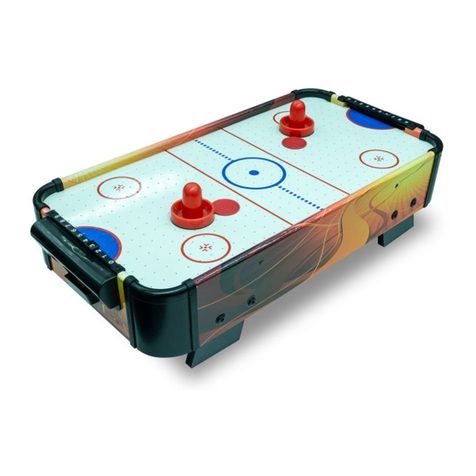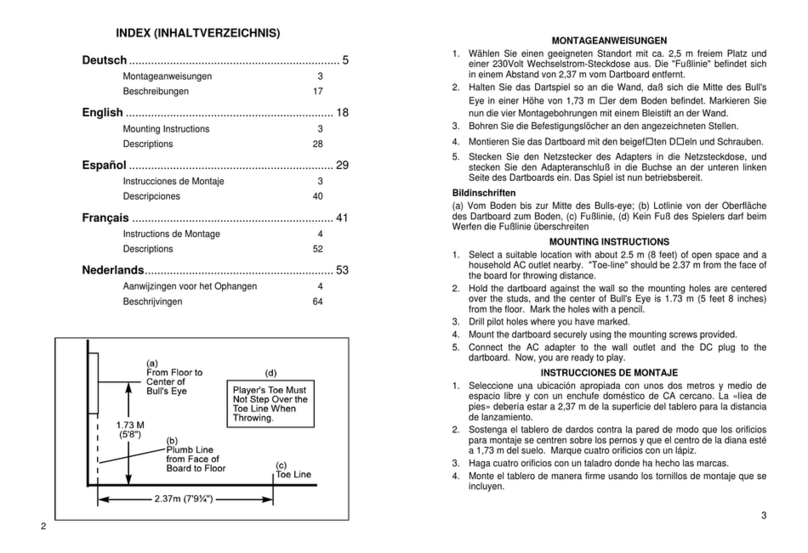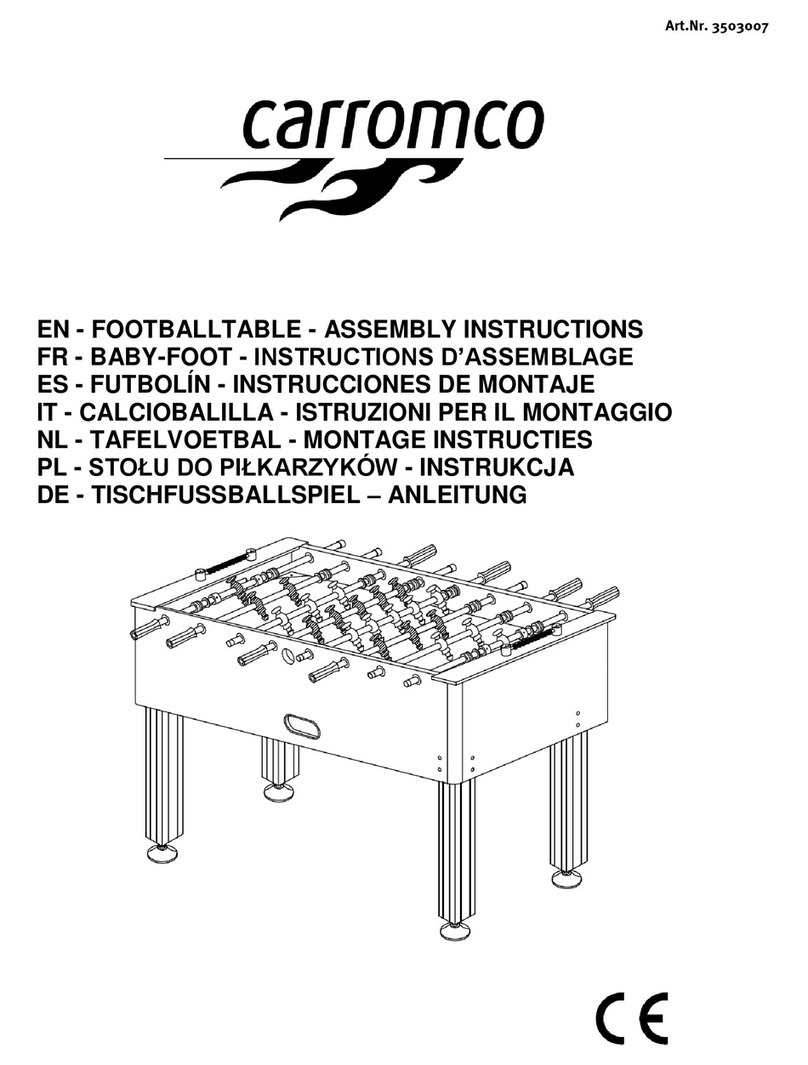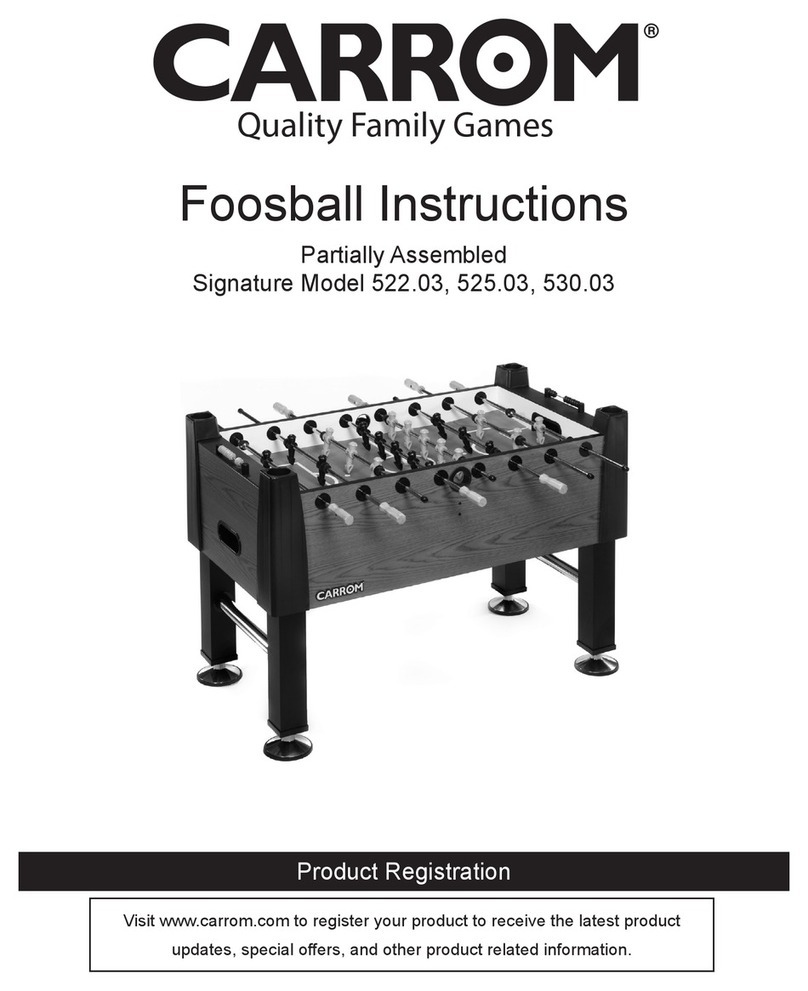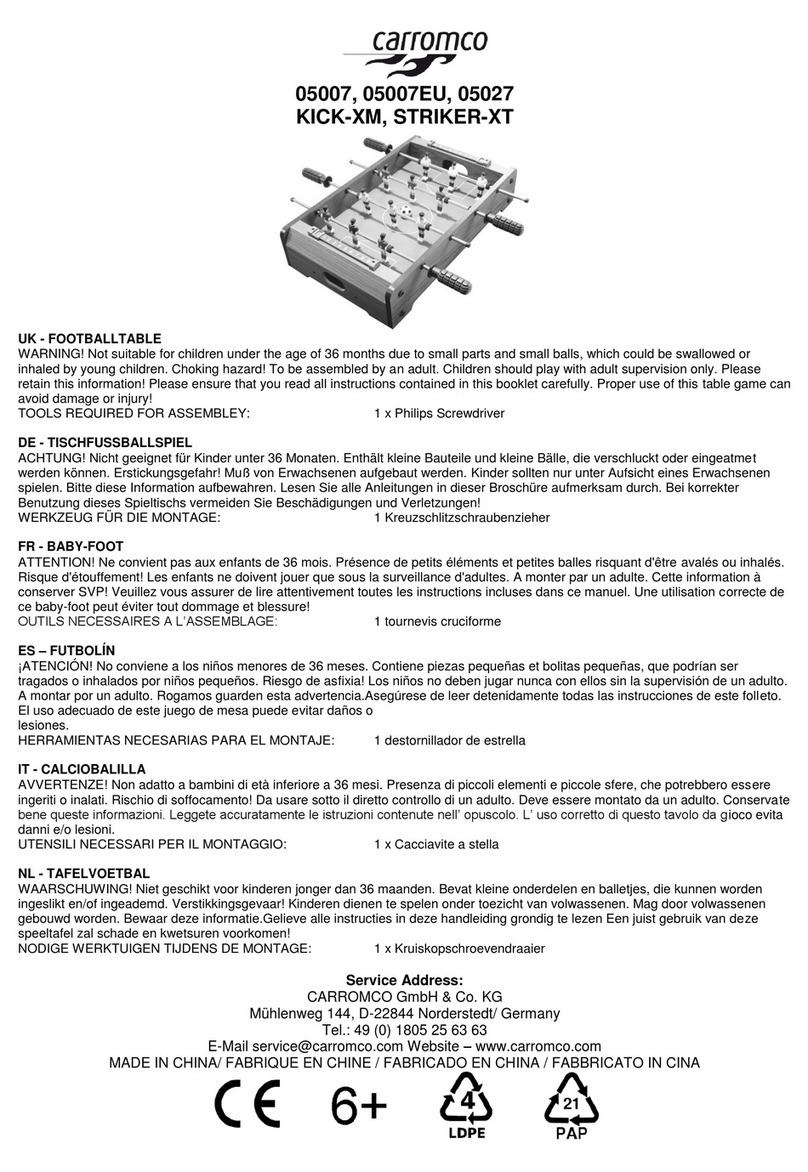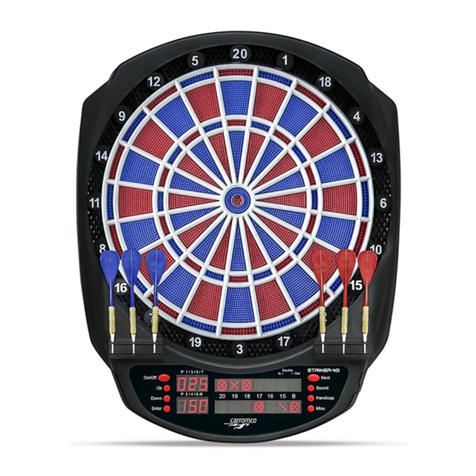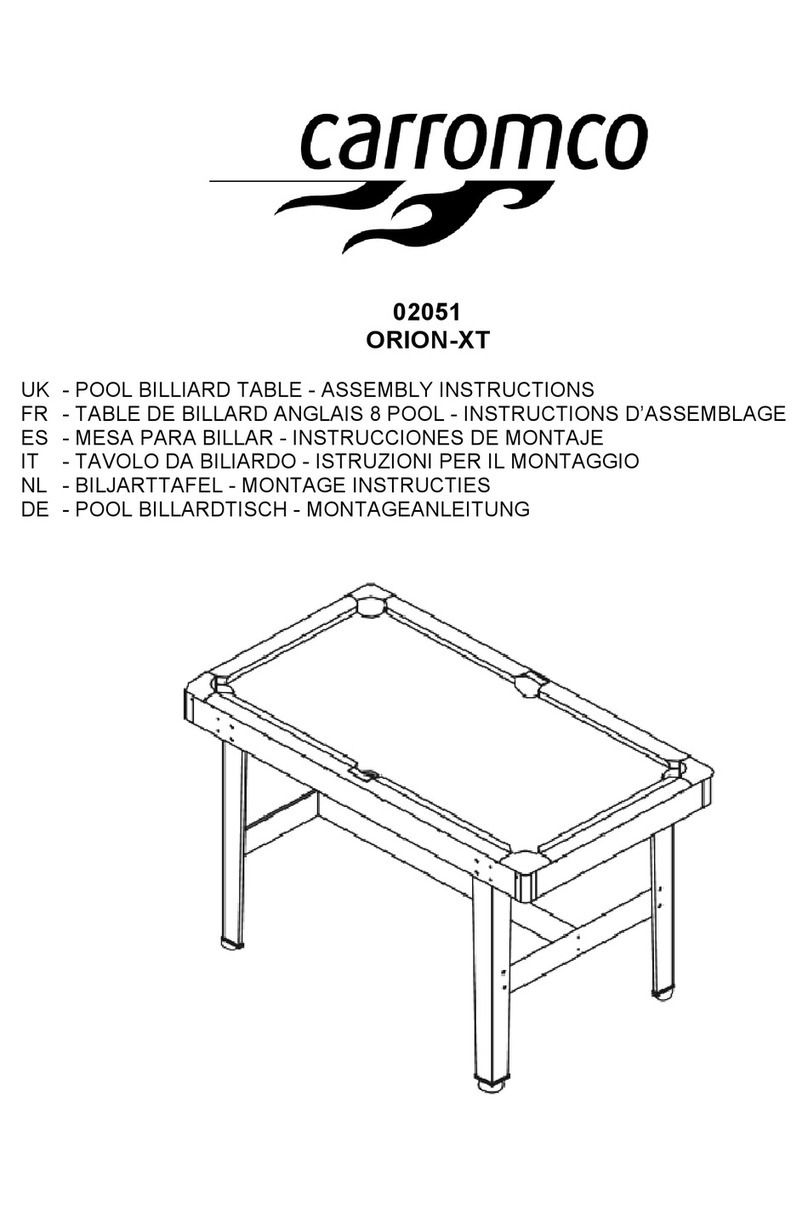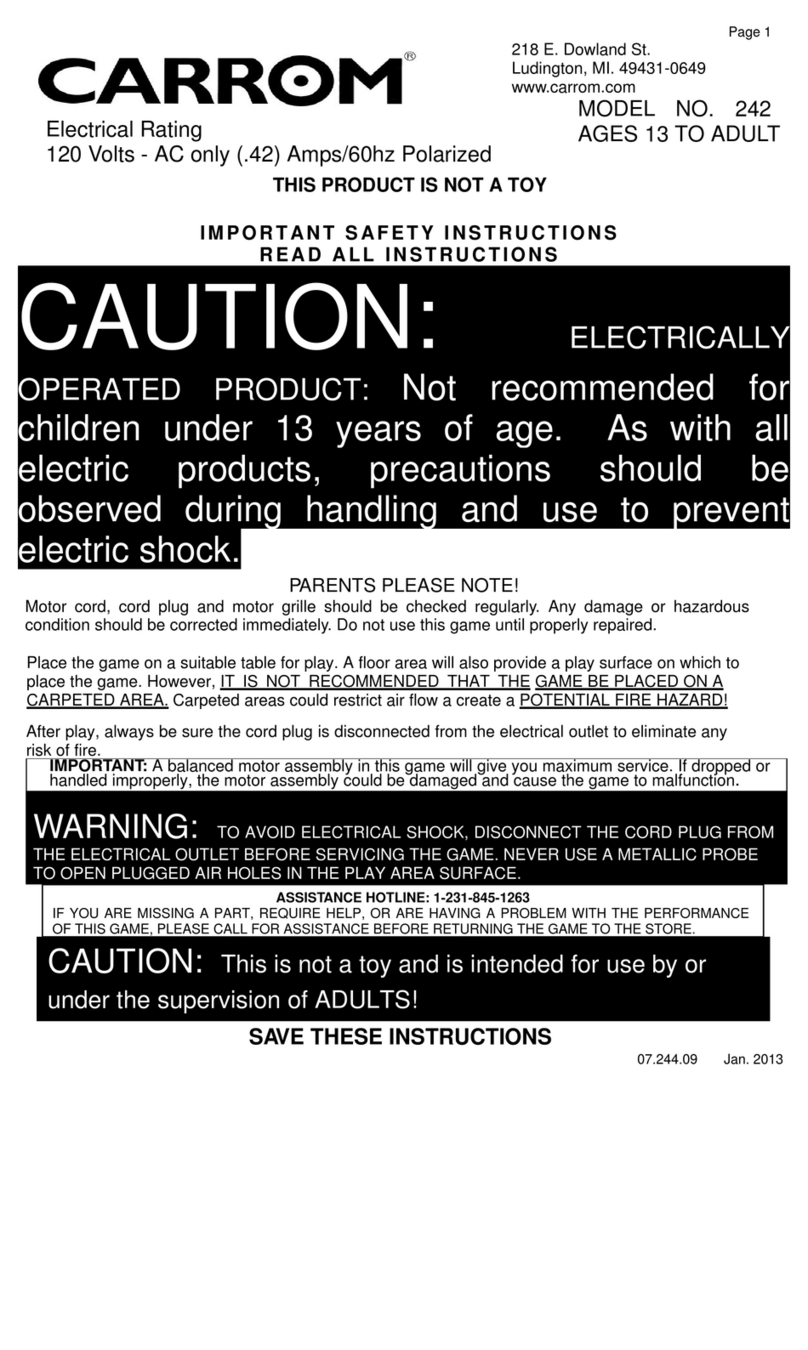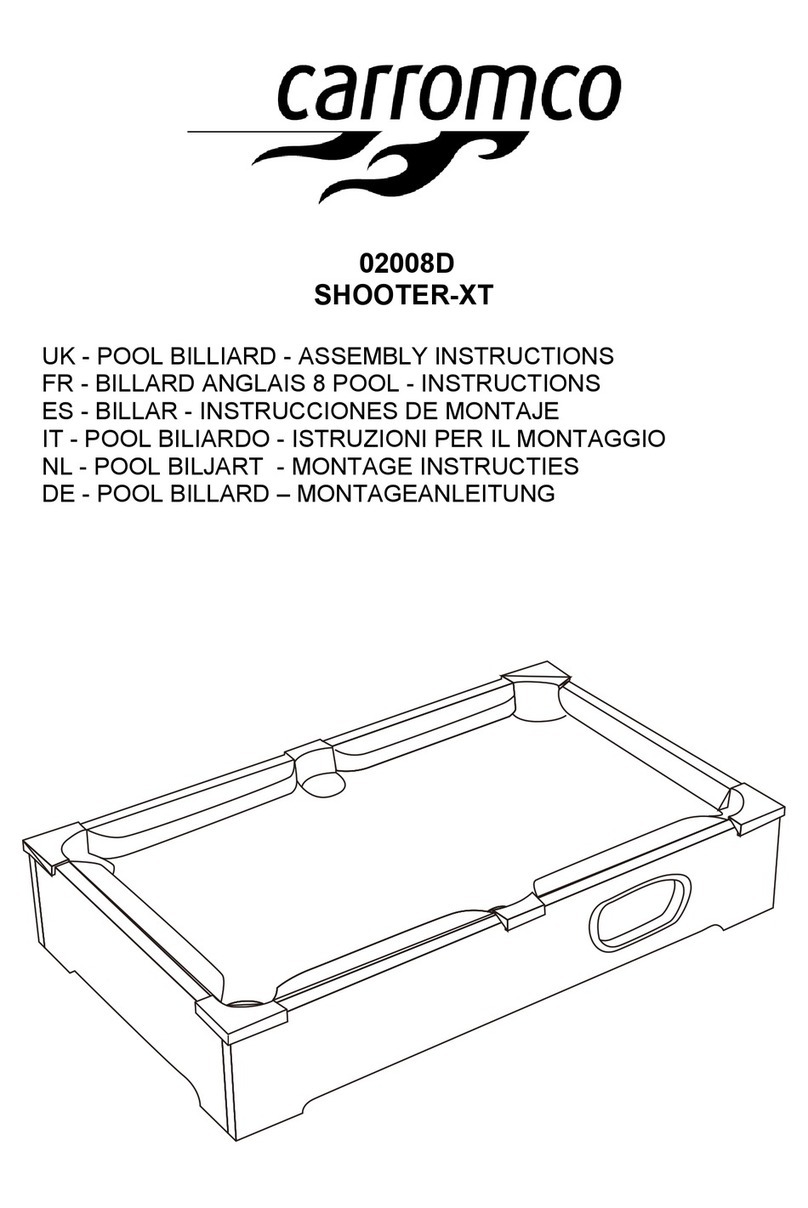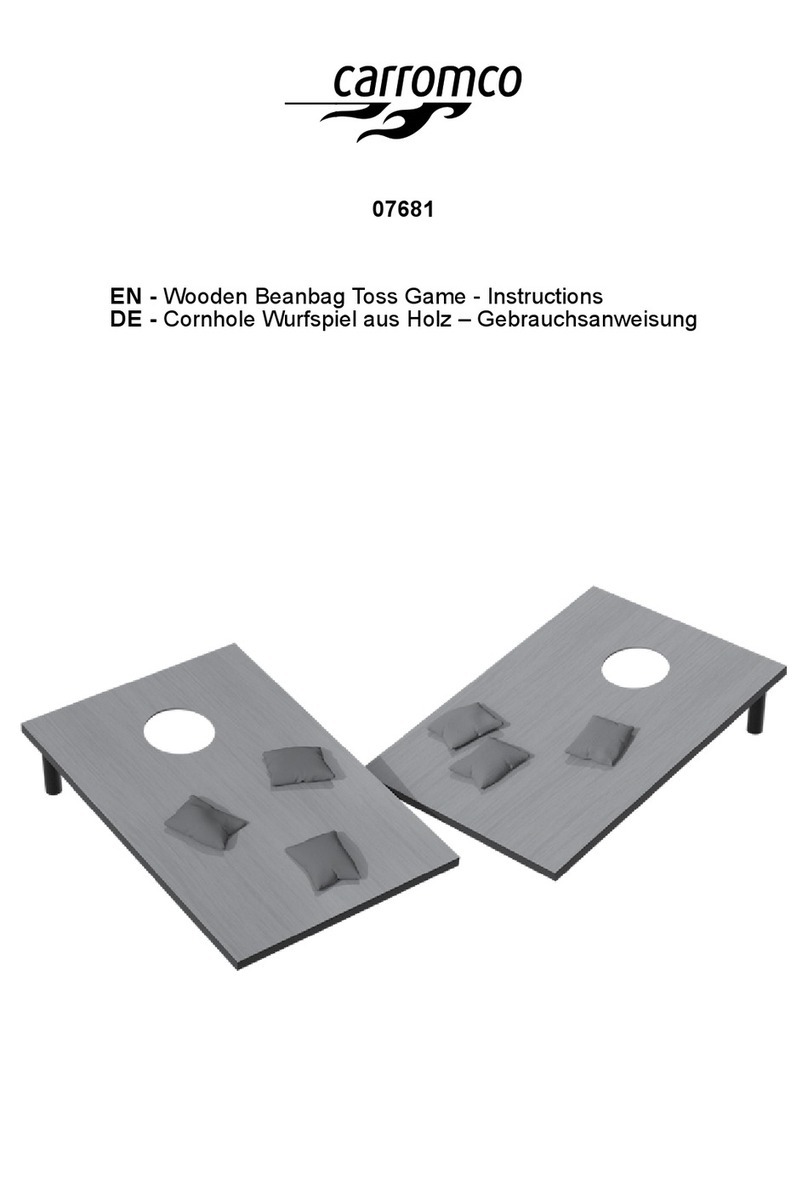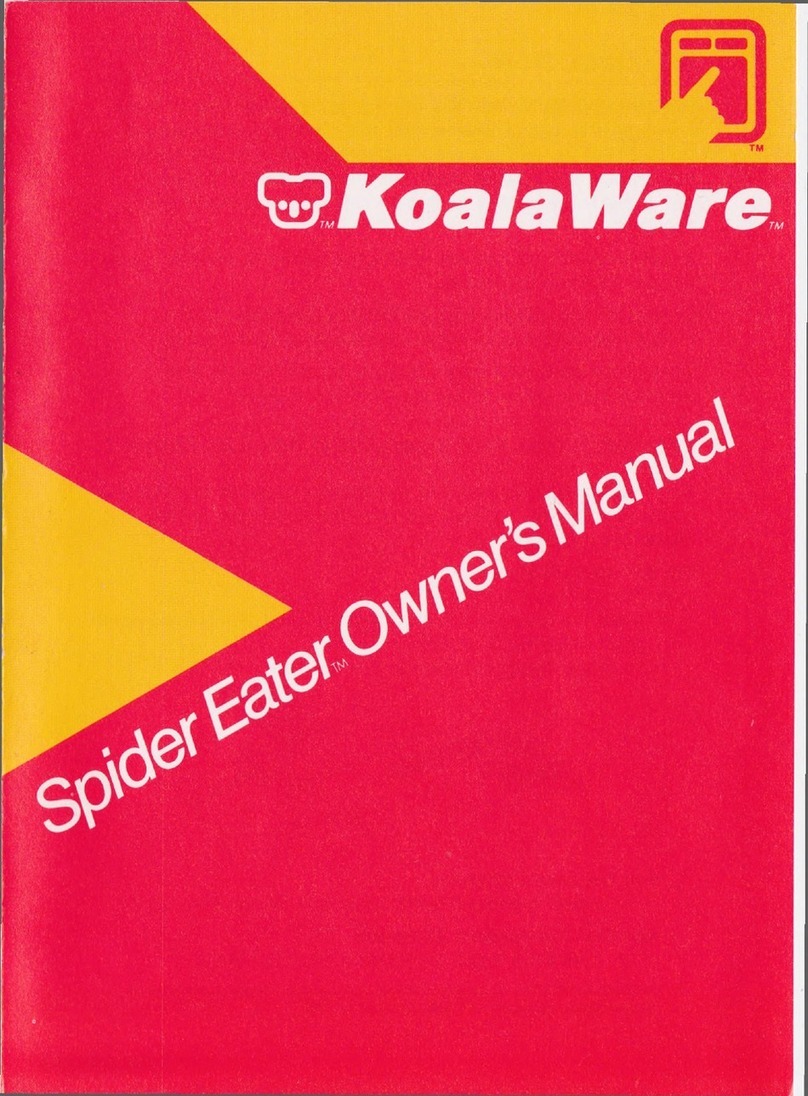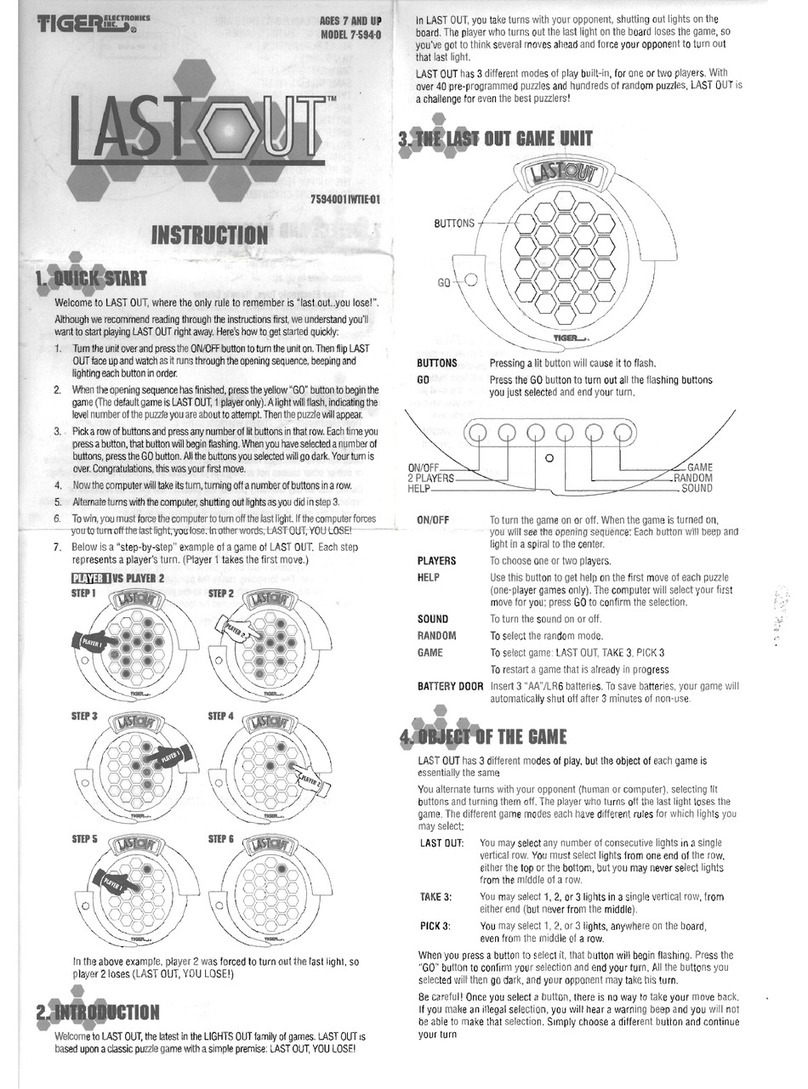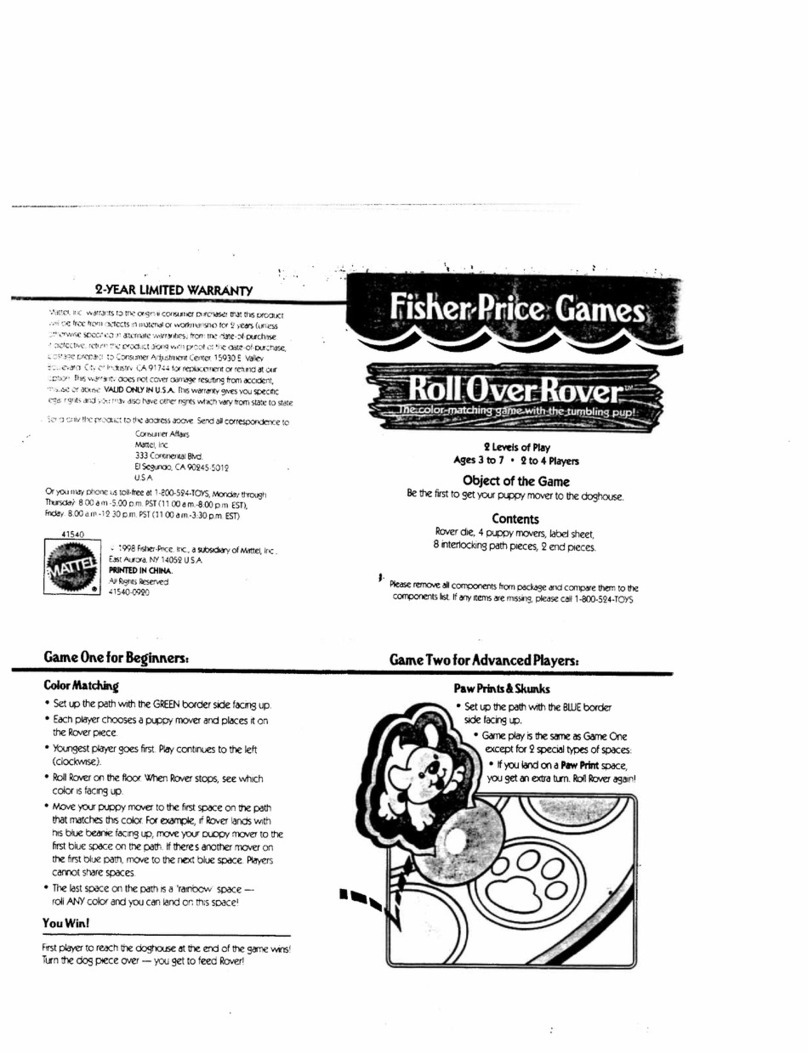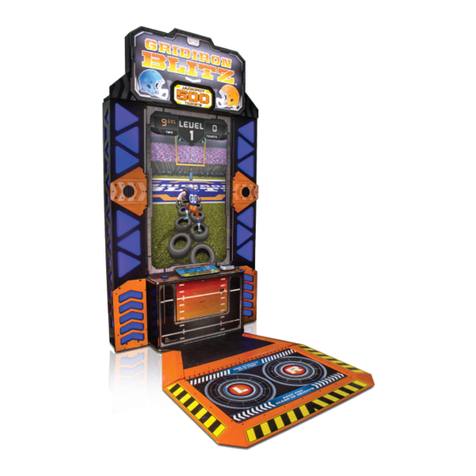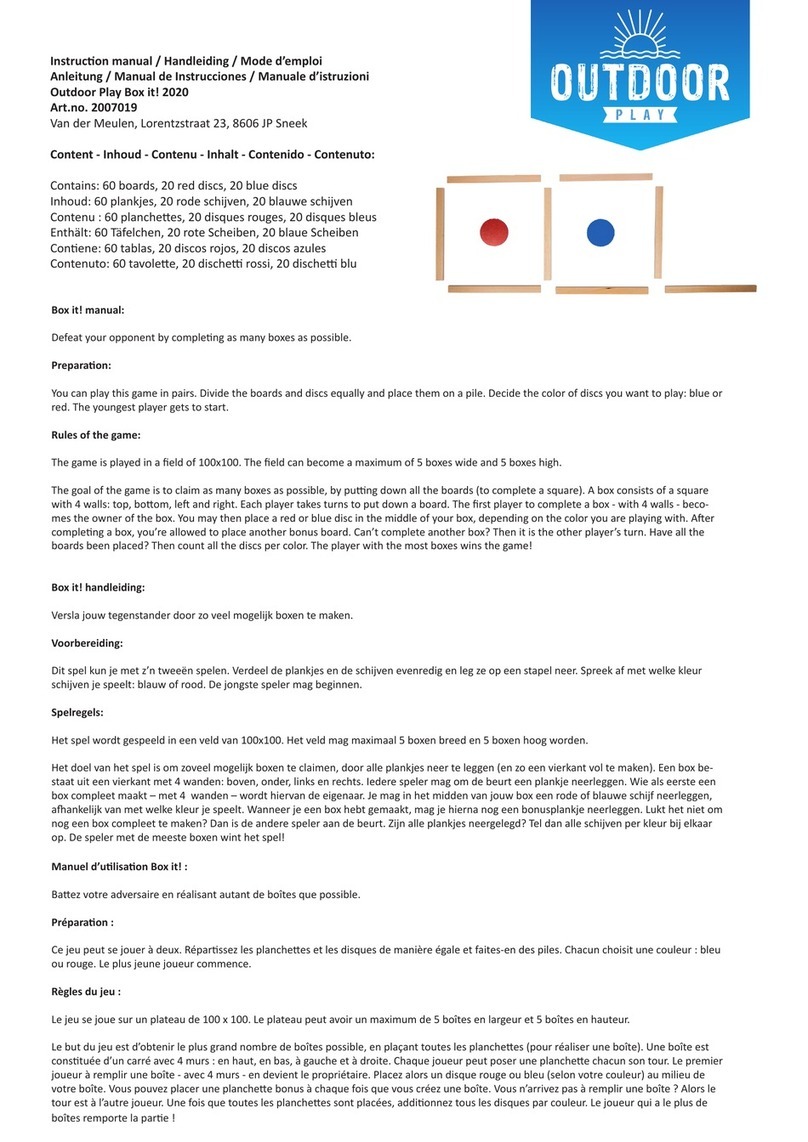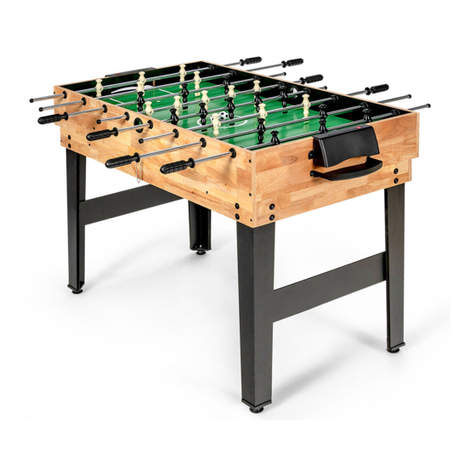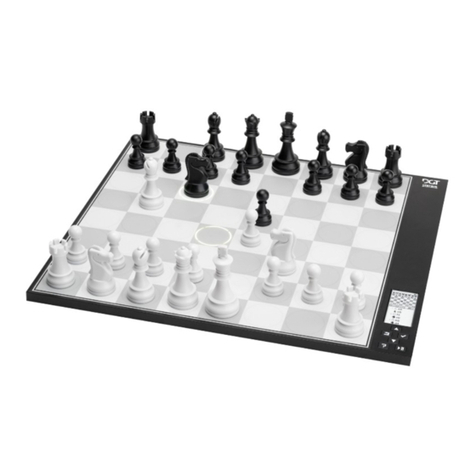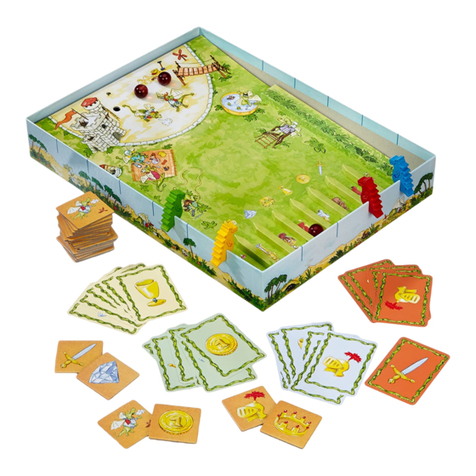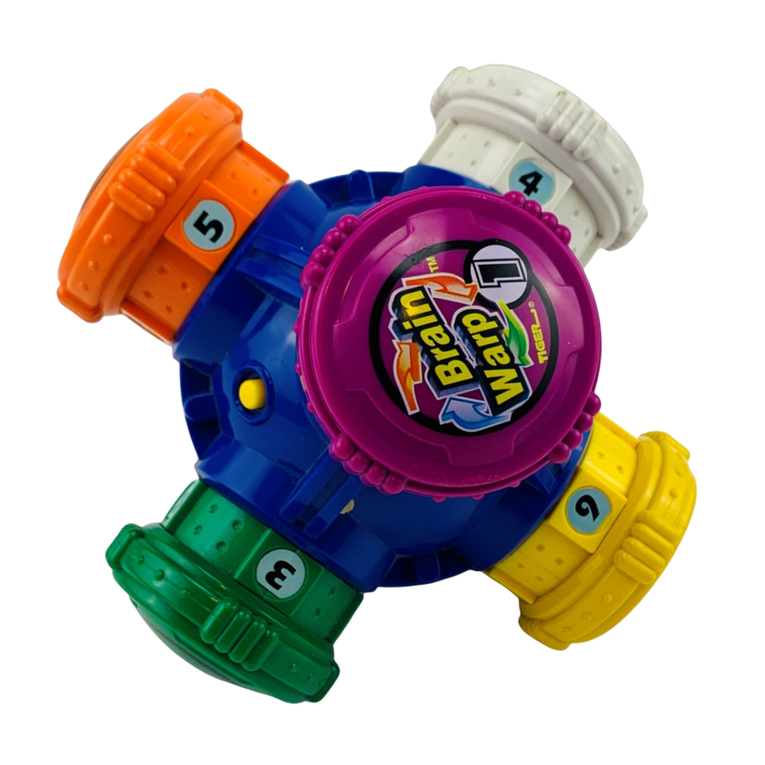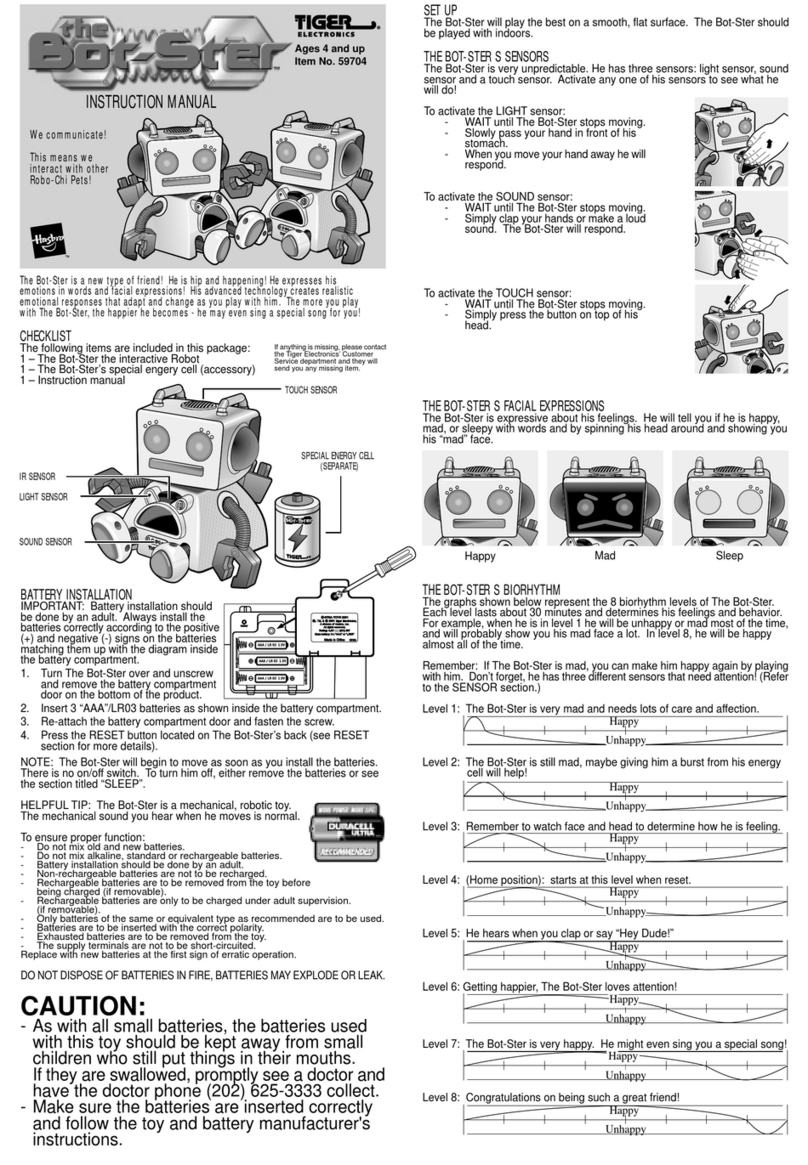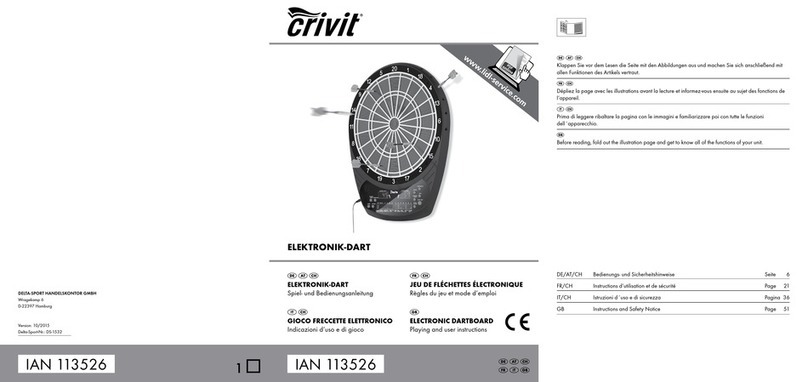
06010, 06210 CHOICE-XT ENGLISH
GAME RULES
1) POOLBILLIARD
WINNINGTHE GAME
In Pool one Player shoots at solid balls (numbers 1 –7).
The opponent Player shoots at striped balls (numbers 9 through 15).
Todeterminewho willstart the game “toss a coin”. The Winner of the “coin toss” gets to start
the game by breaking.The loserof the previous game then gets to break the new game.
APlayer who legally pockets a Ball continues play until missing or committing a foul.
Once a Players Ball group (stripes/solids) is pocketed, the Player may play the 8 Ball.
ThefirstPlayerwhopockets hisorherballnumbers legallyfirstandthensinksthe8Ballis
theWinner!
GAME RULES
The Cue Ball (White Ball) is placed behind the head string and the Playermust either 1.
pocketa ball,or 2. drive four balls into the rails of the table. If the Player fails to make a
correct break the opponent has the option of playing the balls in this position, or racking
the balls and playing the opening break again.
BallsPocketed at theBreak –ThePlayer stays onthe table, andhasachoice ofcallingthe
shotofstripes or solids.
8Ball Pocketedat theBreak–ThePlayerstaysonthetableandhastheoptionofspotting
the8Ball,continuing Play or re-racking the Balls/breaking again.
Scratching at the Break –When the Cue Ball (White Ball) is pocketed on the break 1. all
balls except the 8 Ball are pocketed, 2. the table is open, 3. the opponent Player has the
cue ballin hand and may place it anywhere behind the head string and shoot at any ball
not behind the head string.
After the break, regardless if Balls were pocketed, the table is Open.
Player has choice of Stripes/Solids which are determined by the next legal Ball
pocketed.
PLEASENOTE–PlayersmustcalleachShotinadvancebyindicatingball,andpocket!
Otherwise failure tocall means loss of turn!
To execute a Legal Shot, the first Ball hit must be one of the Balls in the Players group
(eitherstripes or solids).The object Ball must be pocketed or the Cue Ball (WhiteBall) or
any object Ball must come into contact with the table’s rail.
PLEASE NOTE–Itis permissible forthe shooter to bank thecue ball off a rail before
contacting his object ball;however, aftercontact with his object ball, an object ball must be
pocketed, OR the cue ball.
OUT OF PLAY
Fouls when pocketing the 8 Ball.
Pockets the 8 Ball on the same play as the last group of Balls.
Pockets the 8 Ball in a pocket other than the one at shot.
Pockets the 8 Ball when not the legal object Ball.
Scratches when the 8 Ball is the legal object Ball.
Hits the 8 Ball off the table.
FOUL
Opponent Player gets “cue ball in hand”. The Player can place the Cue Ball (White Ball)
anywhere on the table (to be behind the head string on opening break only).
SPOTTING
A Ball is spotted on the long string as close to the foot spot as possible.

